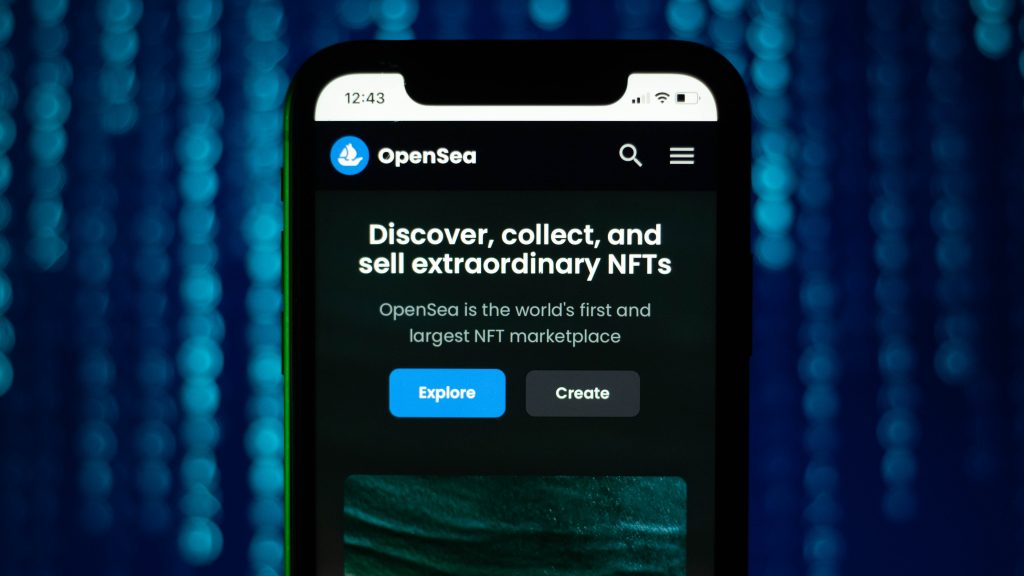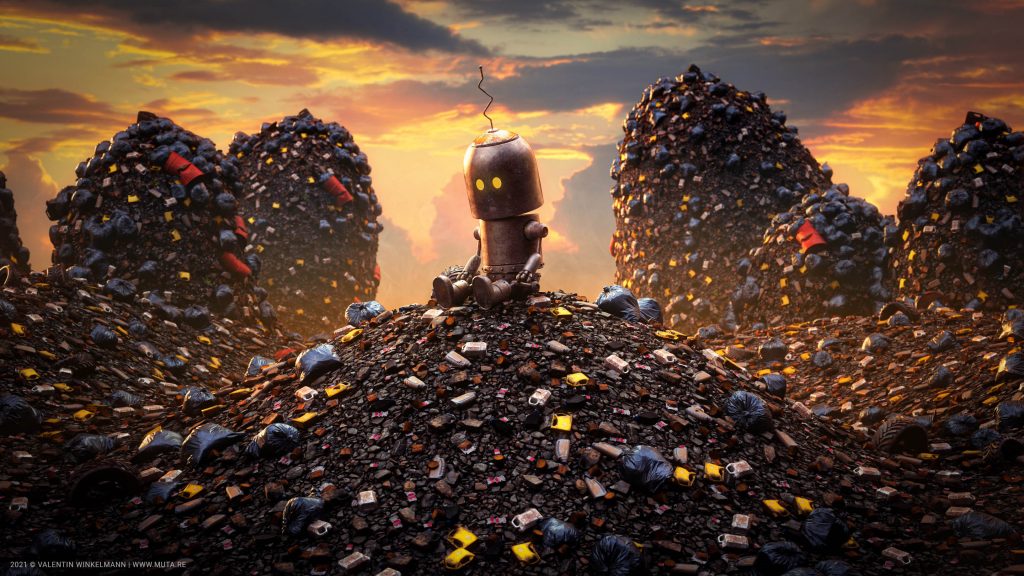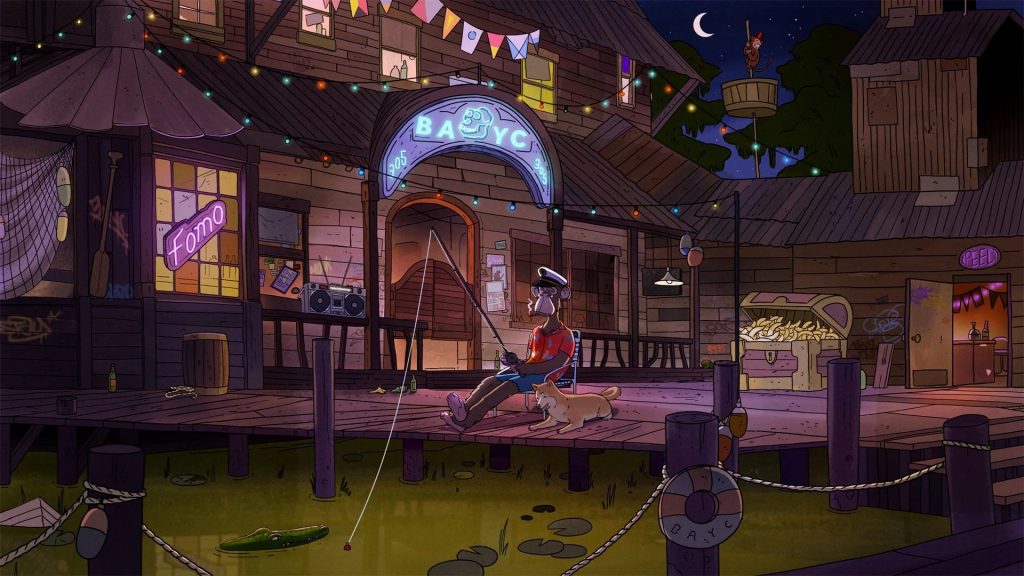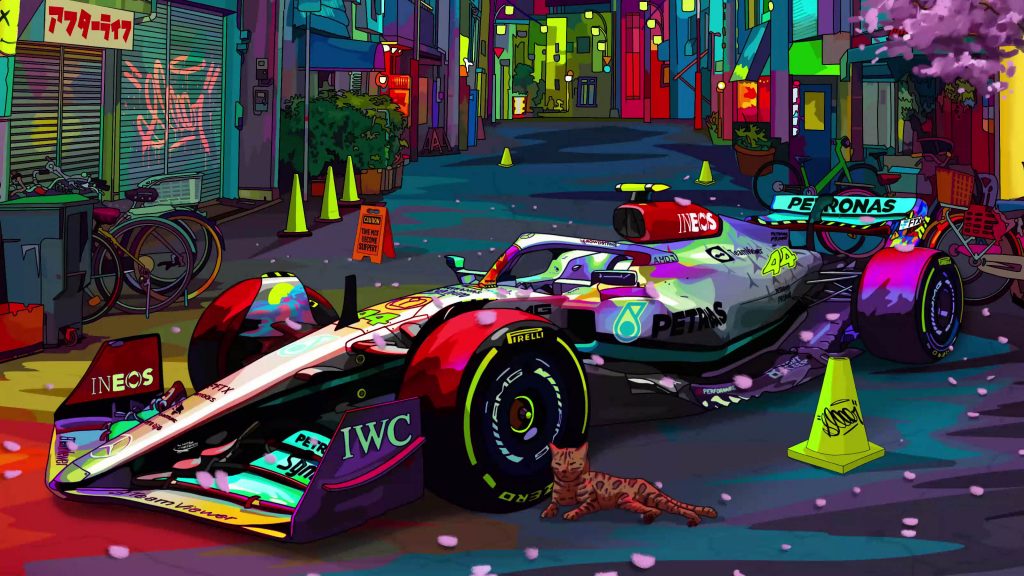NFTs were supposed to make it easier for artists to have control over their work. But with countless accounts of scams, plagiarism and unfair treatment, has it done more harm than good?
Scammers stealing his identity and impersonating him is what terrifies Bor the most. Getting his art stolen and uploaded as NFTs is a close second. But when the latter actually happened last November, he wasn’t really surprised.
As more and more artists have migrated towards NFTs to try and sell their work, cases of stolen artwork have only become more common. “As soon as the market took off, fraud and plagiarism went up with it,” says Bor, the artist, musician and designer from California who manually searched for his work and found it for sale without his permission.
Coming across your art being used illegally is not uncommon for digital artists. While it’s painstaking to counterfeit physical art, stealing someone’s work on the internet is as easy as right-clicking and selecting ‘Save As’. NFTs — digital tokens of any form of art on the internet — were introduced as a means of giving some of the ownership and copyright power back to the artists.
Bor almost jumped on the NFT bandwagon before realising the problems it posed, and decided to become an activist for all creatives. He says, “Small, independent artists were absolutely the first to really embrace this technology because they thought it would fix the problems that artists face. But in the end, it’s the same problems they had before, if not worse.”
In recent months, crime in the NFT world has soared. From plagiarism and hacks to identity thefts and extortion, fraudsters have used every trick in the book to scam artists, and their schemes have reaped massive returns. A report by Chainalysis found that 262 fraudulent accounts selling NFTs to unsuspecting buyers made a profit of $8.9 million in one year.
Artists don’t like talking about it because of the harassment that comes after
Bor felt there wasn’t enough attention being drawn to this, and to document frauds, he started the Twitter account @NFTtheft. “It’s a tool for other people to track theft, a resource for plagiarism in the space,” says Bor, whose account regularly retweets artists who’ve been the victims of NFT crime. Still, he believes what he’s documenting is a narrow sliver of all the total cases.
OpenSea, the largest NFT marketplace on the internet, recently announced that 80 percent of NFTs on the platform are “plagiarised works, fake collections, and spam.” Unsurprisingly, it’s the place where Bor found NFT copies of his work as well, and he argues that there’s a lot more that marketplaces can do to cut down on frauds.
“Right now, you can anonymously create an account without needing anything to tie you to a real person,” he says. “If you get caught stealing art and they shut your account, you can just create another account. Since they don’t know who you are, they can’t stop you from doing it again.”

But the problem with marketplaces stepping in to offer protection in the form of regulations goes against the principle of a decentralised blockchain — the technology upon which NFTs are built. Dr Catherine Flick, a computing and social responsibility academic at De Montfort University, says that a lot of the people buying NFTs are cryptocurrency fanatics who avidly believe that no one should be in charge of the internet.
“Regulation will definitely drive off some of [the buyers], because they believe in moving away from the centralised structures,” she says. “The whole idea of regulations is just anathema to them.”
OpenSea’s attempts to introduce protective measures for artists have been met with scepticism by such people. But it has also offered artists at least a procedure or guidelines to do something if they find their art getting stolen. Last December, hundreds of stolen artworks by Dutch illustrator Lois van Baarle showed up on OpenSea. After calling out the company on Twitter, she managed to get all of them taken down within 48 hours.
In Van Baarle’s case, her immense popularity on social media helped in broadcasting her message, but not every artist is as successful. Bor says that he’s heard from multiple artists whose pleas to take down the stolen artworks have gone unheard. In some of the worst cases, OpenSea has outright refused to do so, or made it terribly difficult by asking them to submit personal information that would be shared with the sellers of the forged artworks.
Revealing sensitive information is particularly dangerous for those speaking out against cryptocurrency, as they become the targets of crypto-evangelists. According to Bor, this is another reason why a lot of victims of NFT crime don’t come out to the public with their stories.
“A lot of artists don’t like talking about it because of the harassment that comes after. People will pile on to them. I’ve seen artists just stop sharing on Twitter, or have their accounts go private or deleted,” says Bor, who uses a made-up name to stay anonymous and avoid backlash from the crypto world.
But the quagmire isn’t just limited to artists who sell NFTs. In April, independent artist and game designer Valentin Winkelmann’s 3D artwork titled ‘Steampunk Pilot Seat’ was bought by the massively popular NFT artist called Danguiz for $35. Winkelmann had never dabbled in NFTs before, and his works aren’t permitted to be resold. But Danguiz put 999 copies of The Chair for sale as NFTs, speculated to sell for a total of $1.5 million.

In the end, Winkelmann managed to gather enough support after calling out Danguiz on Twitter to halt his NFT sale, but Bor says these kinds of events just go on to show how wild things can get. In one particularly bizarre case, a UK art gallery that was forced to move online for selling their physical art as a result of the lockdown and rising rents, had entire collections scraped from its website and put up as NFTs.
“These are physical artists — oil painters and sketchers, who aren’t even in the digital space,” says Bor. “They were simply working with a physical gallery that was selling their pieces online. And then they got stolen by random bots.”
Bots have been a major thorn for artists who’ve decided to stay away from NFTs and continued to publish their work on existing digital platforms. When DeviantArt — the world’s largest online art community with more than half a billion artworks — decided to monitor the blockchain for copies of its artists’ works, the whole platform was attacked by bots. The company’s chief operating officer told TechFirst in February that they had found 120,000 NFTs scraped off directly from their website in three months.
Dr Flick believes that all these scams have resulted in the artists being left vulnerable, and big, powerful entities swooping in to fill the power vacuum. “As much as everyone would like to think it’s decentralised, it’s still built on economic structures that are reliant on exploitative labour,” she says.
Currently, the biggest NFT collection, called the Bored Apes is owned by a single company called Yuga Labs and is estimated to be valued around $2 billion. In March, Yuga Labs acquired the second biggest NFT collection, called CryptoPunks. This move has raised questions that if one entity controls the two biggest NFT collections, is the industry even as remotely decentralised as suggested?
Amidst these big market acquisitions, Dr Flick says that artists are the ones who keep getting screwed. The lead artist behind the inception of the entire Bored Apes collection, Seneca, gets little credit for her efforts. In January, she spoke to Rolling Stone about stumbling across her art being used as Twitter profile pictures by celebrities like Stephen Curry and Eminem. They chunked out hundreds of dollars to buy her images, but the money went to Yuga Labs — not her. “It really took me some time to wrap my head around all this,” she said.

Dr Flick thinks that what we’re seeing is tech colonialism — where people who have the money hire artists and use their art for making more money. “The number one NFT project of all-time is entirely built around this artist. And I’m not saying they ripped her off. They paid her what they said they would. But this is just what the future is going to be, where beyond all the scams, you have investors hiring artists for as cheap as they can,” she says.
Bor shares a similar sentiment. He believes that with big corporations stepping into the NFT art world, artists will end up getting lost in the back pages. He says that more people are getting attracted to utility-based art, where they want some sort of return on investment, or they get to become a part of a club.
“No one’s buying the artists’ art,” he says. “If someone’s buying an NFT from Ford, they’re doing it because it might offer them a discount on a Ford car. Or if they’re buying an NFT from Starbucks, it’s because it’s part of some loyalty programme. I think NFTs are going to shift in a weird way, where everyone’s just trying to put money into something that will hopefully make them more money.”

The downward trend has already began. Sales of NFTs dropped by 92 percent in the first week of May — to a daily average of 19,000 from a peak of about 225,000 in September, according to The Wall Street Journal. This spells even more trouble for artists when you consider the fact that 75 percent of objects sell for less than $15, as shown in a report by The Alan Turing Institute last year.
This could be the early signs of the NFT bubble deflating, if not bursting. “Last year, all you could hear was how this is fixing everything, but in the end, most artists are not making money,” says Bor. “It’s a really unsafe space, so what I’m thinking the future is, it’s just people are going to quietly stop talking about it. They’re quietly going to lose interest.”

